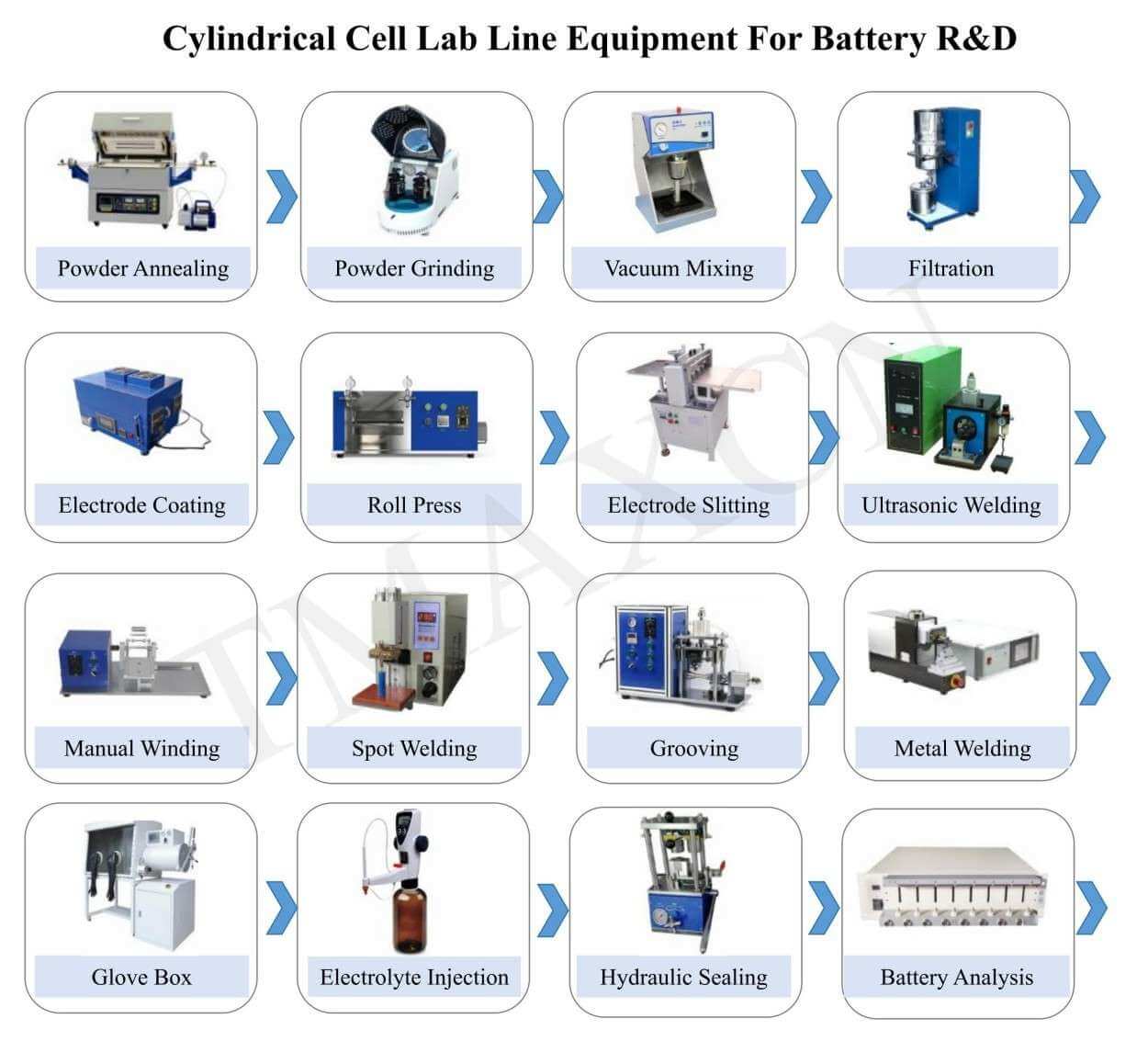Site Blog
contact us
- If you have questions, please contact us, all questions will be answered
- Email : David@tmaxcn.com
- Email : Davidtmaxcn@gmail.com
- Add : No. 39, Xinchang Road, Xinyang, Haicang Dist., Xiamen, Fujian, China (Mainland)
hot products
A "Car Battery Pilot Line" typically refers to a specialized manufacturing facility designed for the preliminary testing, development, and optimization of processes related to car battery production. This phase is crucial in the lifecycle of electric vehicle (EV) battery technology, allowing manufacturers to assess the feasibility of new designs, materials, and production techniques before full-scale production.
Key features of a Car Battery lab Line include:
Advanced Research and Development:
Material Innovation: The pilot line allows for in-depth exploration of cutting-edge materials for electrodes, electrolytes, and casings. Researchers can experiment with next-generation materials to enhance energy density, lifespan, and safety.
Cell Chemistry: Scientists use the Car battery pilot line to investigate and optimize various cell chemistries, such as lithium-ion, solid-state, or emerging technologies. This exploration is crucial for pushing the boundaries of energy storage capabilities.
Prototyping and Small-Batch Production:
Customization and Configuration: Manufacturers can customize battery designs for specific vehicle models or performance requirements. The Car Battery production Line facilitates the production of small batches to test and validate these customized configurations.
Performance Testing: Rigorous testing protocols are employed to evaluate the performance under different conditions, including extreme temperatures, high discharge rates, and prolonged cycling. This data informs design improvements.
Process Optimization and Automation:
Automated Production Techniques: The pilot line serves as a testing ground for implementing advanced automation and robotics in the production process. This includes automated assembly, quality checks, and data-driven decision-making.
Energy and Resource Efficiency: Engineers focus on optimizing the energy and resource efficiency of the manufacturing process. This involves minimizing waste, reducing production time, and ensuring sustainability in battery production.
Quality Assurance and Safety:
Fault Analysis: The pilot line is equipped with diagnostic tools for identifying and analyzing potential faults in battery cells. This is essential for enhancing safety and reliability, especially in real-world driving conditions.
Regulatory Compliance: Manufacturers use the pilot line to ensure that batteries meet or exceed regulatory safety and environmental standards. Compliance with international regulations is essential for market acceptance.
Data-Driven Decision-Making:
Big Data Analytics: The extensive data collected during the pilot phase is analyzed using big data techniques. This data-driven approach helps identify patterns, predict failures, and optimize manufacturing processes for scalability.
Machine Learning Integration: Machine learning algorithms are employed to continuously improve production efficiency, quality control, and predictive maintenance. These technologies contribute to a smarter and more adaptive manufacturing environment.
Collaboration and Industry Impact:
Ecosystem Collaboration: The pilot line fosters collaboration between battery manufacturers, research institutions, and other stakeholders. This collaborative ecosystem accelerates innovation and facilitates knowledge sharing.
Industry Leadership: Companies with successful pilot lines often emerge as industry leaders, driving advancements in EV battery technology. They contribute to the establishment of industry standards and influence the direction of future research.
In essence, a Car Battery Pilot Line is a dynamic and multifaceted facility that goes beyond traditional manufacturing. It serves as a hub for innovation, collaboration, and continuous improvement, playing a pivotal role in shaping the future of electric mobility


 Cindy@tmaxcn.com
Cindy@tmaxcn.com David@tmaxcn.com
David@tmaxcn.com +86 13003860308
+86 13003860308 18659217588
18659217588